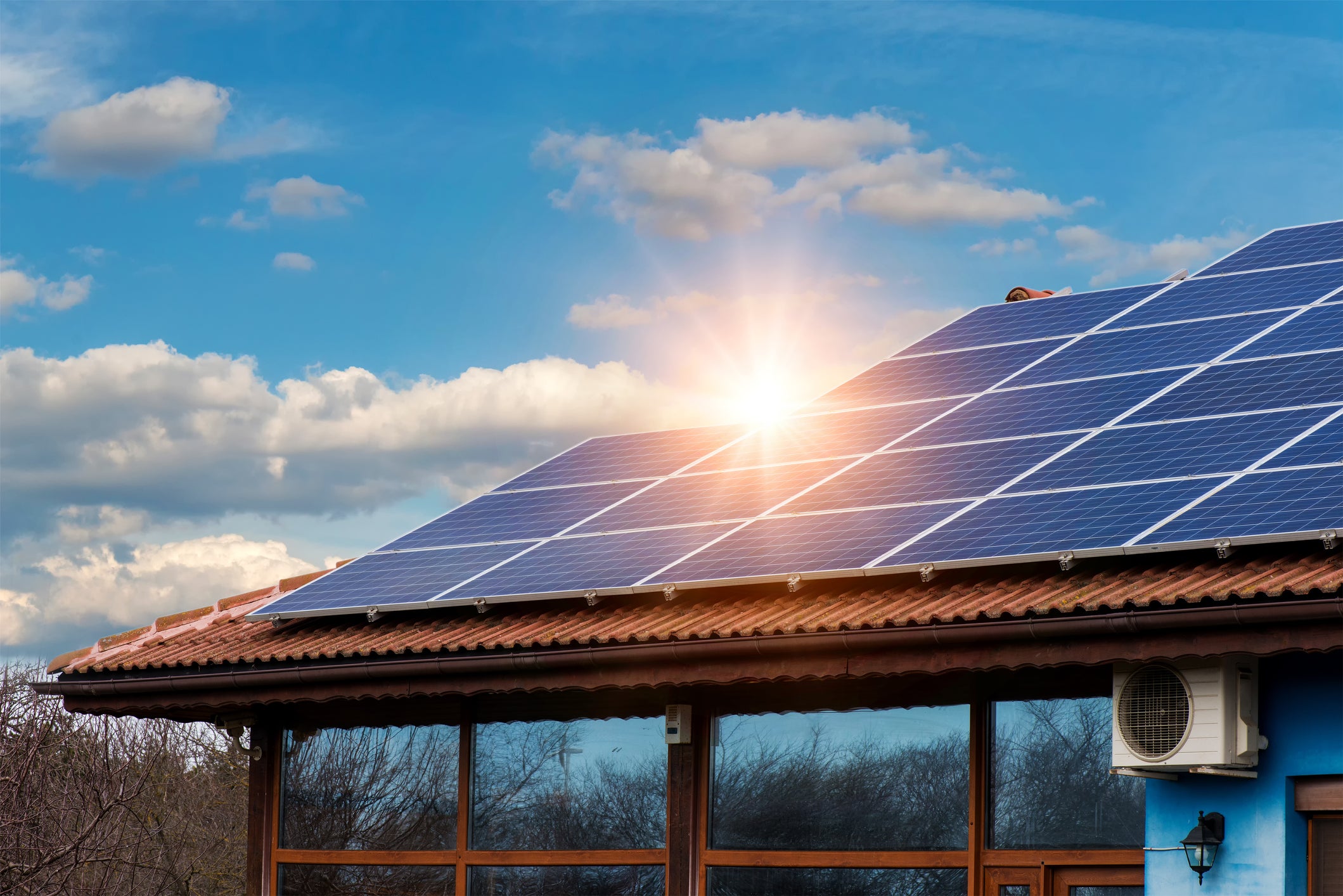
Solar 101 here we go
A rooftop solar panel array A rack-and-panel solar system
Each individual panel is constructed of a layer of silicon cells, a metal frame, a glass casing surrounded by a special film, and wiring. For maximum effect, the panels are grouped together into “arrays” (an ordered series) and placed on rooftops or in large outdoor spaces. The solar cells, which are also referred to as photovoltaic cells, absorb sunlight during daylight hours.
Silicon ingot and wafer A silicon ingot and wafer
Within each solar cell is a thin semiconductor wafer made from two layers of silicon. One layer is positively charged, and the other negatively charged, forming an electric field. When light energy from the sun strikes a photovoltaic solar cell, it energizes the cell and causes electrons to ‘come loose’ from atoms within the semiconductor wafer. Those loose electrons are set into motion by the electric field surrounding the wafer, and this motion creates an electrical current.
.
READ ALSO: How to speed up the transfer process .
A solar inverter A solar inverter. Image provided by SMA Solar Technology AG
You now have solar panels working efficiently to transform sunlight into electricity, but the electricity generated is called direct current (or DC) electricity, which is not the type of electricity that powers most homes, which is alternating current (or AC) electricity. Fortunately, DC electricity can easily be changed into AC electricity by a gadget called an inverter. In modern solar systems, these inverters can be configured as one inverter for the entire system or as individual microinverters attached behind the panels.
A solar microinverter A solar microinverter
Once the solar energy has been converted from DC to AC electricity, it runs through your electrical panel and is distributed within the home to power your appliances. It works exactly the same way as the electrical power generated through the grid by your electric utility company, so nothing within the home needs to change. Since you still remain connected to your traditional power company, you can automatically draw additional electricity to supplement any solar shortages from the grid.
.
MORE ABOUT: Creating a kid/pet friendly garden .
A smart electric meter A smart electric meter
On cloudy days and overnight, your solar shingles or panels may not be able to capture enough sunlight to use for energy; conversely, in the middle of the day when nobody is home, they may collect surplus energy—more than you need to operate your home. That’s why a meter is used to measure the electricity flowing in both directions—to and from your home.Your utility company will often provide credits for any surplus power you send back to the grid. This is known as net metering.
Now that you know the basics about solar energy, you can marvel at how today’s photovoltaic technology can capture the vast power of the sun to operate a home. It may not be rocket science—but it definitely is human ingenuity at its best. .
Courtesy of: https://www.certainteed.com/solar/solar-101-abcs-solar-power/
BROWSE THE FACEBOOK FRIENDS PAGE